A Multi-Task Multi-View Based Multi-Objective Clustering Algorithm
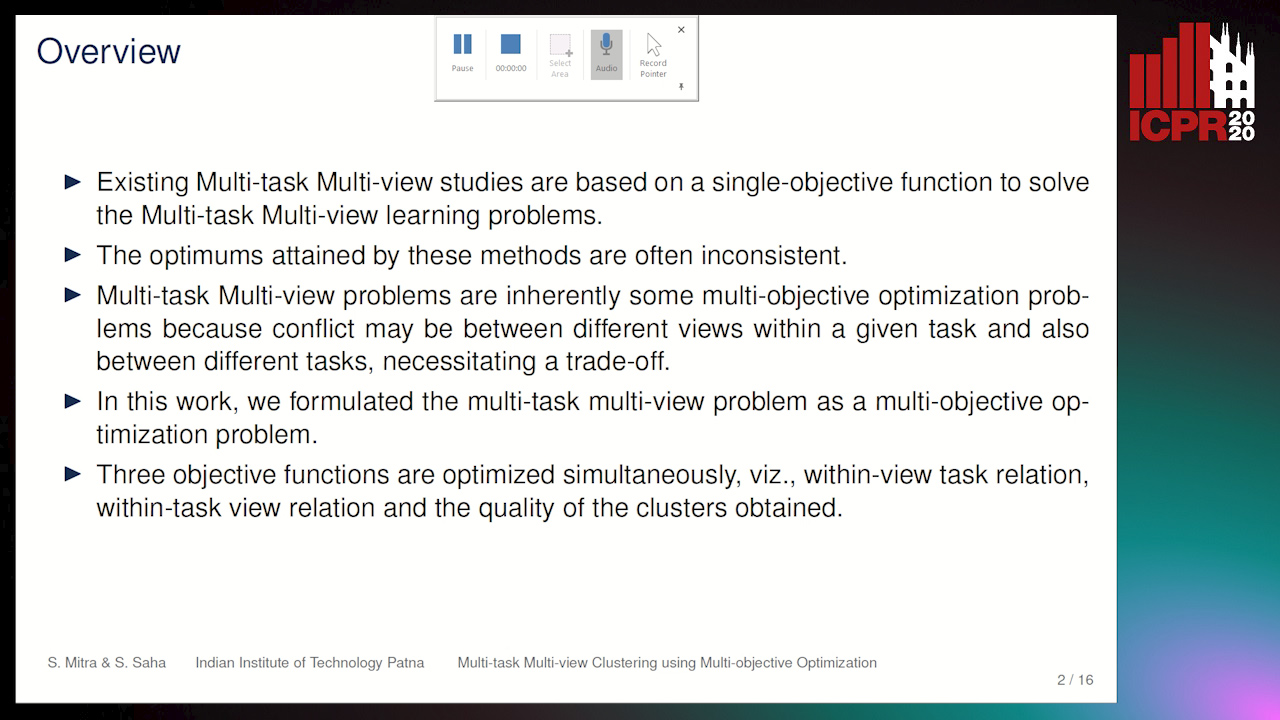
Auto-TLDR; MTMV-MO: Multi-task multi-view multi-objective optimization for multi-task clustering
Similar papers
Double Manifolds Regularized Non-Negative Matrix Factorization for Data Representation
Jipeng Guo, Shuai Yin, Yanfeng Sun, Yongli Hu
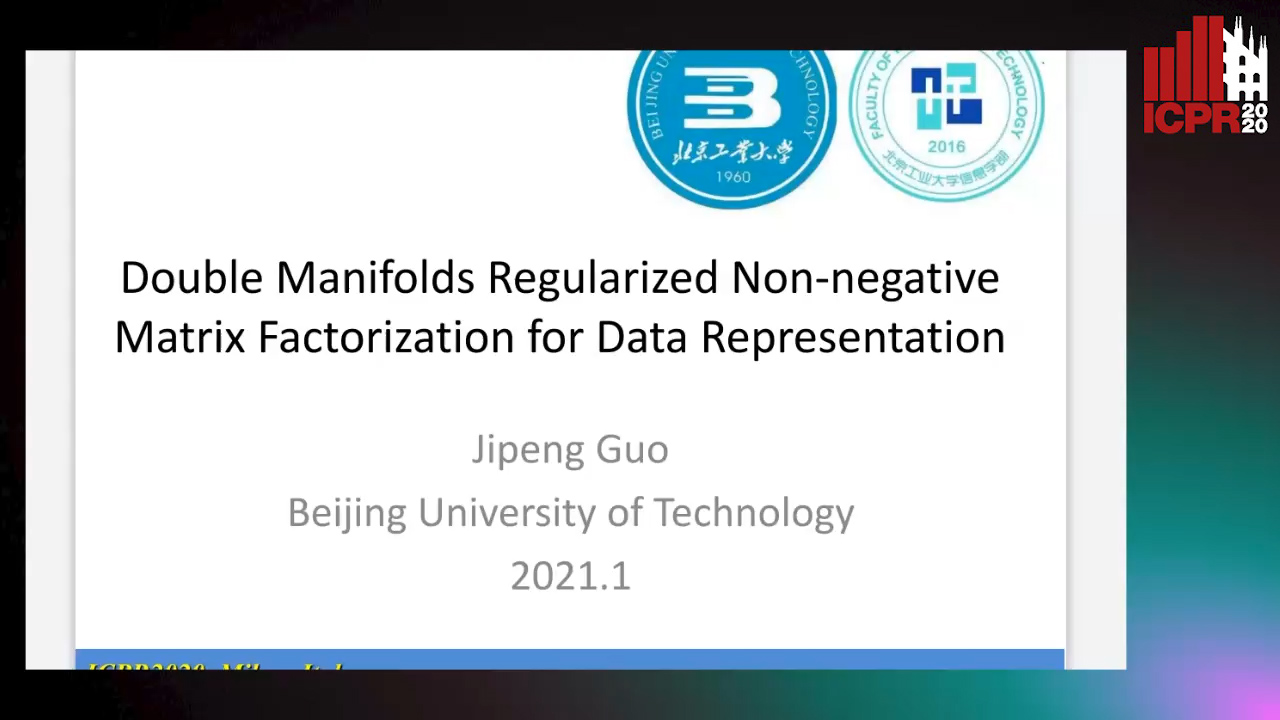
Auto-TLDR; Double Manifolds Regularized Non-negative Matrix Factorization for Clustering
Abstract Slides Poster Similar
An Invariance-Guided Stability Criterion for Time Series Clustering Validation
Florent Forest, Alex Mourer, Mustapha Lebbah, Hanane Azzag, Jérôme Lacaille

Auto-TLDR; An invariance-guided method for clustering model selection in time series data
Abstract Slides Poster Similar
A Novel Adaptive Minority Oversampling Technique for Improved Classification in Data Imbalanced Scenarios
Ayush Tripathi, Rupayan Chakraborty, Sunil Kumar Kopparapu

Auto-TLDR; Synthetic Minority OverSampling Technique for Imbalanced Data
Abstract Slides Poster Similar
JECL: Joint Embedding and Cluster Learning for Image-Text Pairs
Sean Yang, Kuan-Hao Huang, Bill Howe
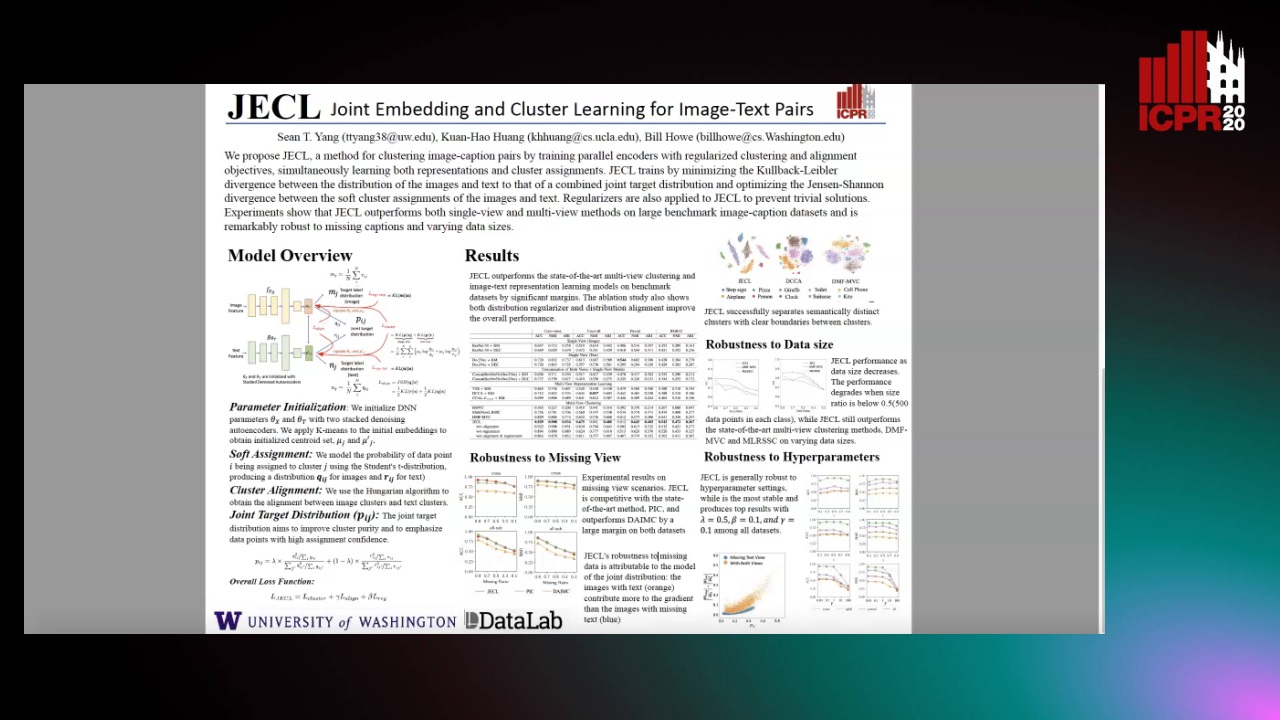
Auto-TLDR; JECL: Clustering Image-Caption Pairs with Parallel Encoders and Regularized Clusters
Sketch-Based Community Detection Via Representative Node Sampling
Mahlagha Sedghi, Andre Beckus, George Atia

Auto-TLDR; Sketch-based Clustering of Community Detection Using a Small Sketch
Abstract Slides Poster Similar
Low Rank Representation on Product Grassmann Manifolds for Multi-viewSubspace Clustering
Jipeng Guo, Yanfeng Sun, Junbin Gao, Yongli Hu, Baocai Yin

Auto-TLDR; Low Rank Representation on Product Grassmann Manifold for Multi-View Data Clustering
Abstract Slides Poster Similar
Scientific Document Summarization using Citation Context and Multi-objective Optimization
Naveen Saini, Sushil Kumar, Sriparna Saha, Pushpak Bhattacharyya
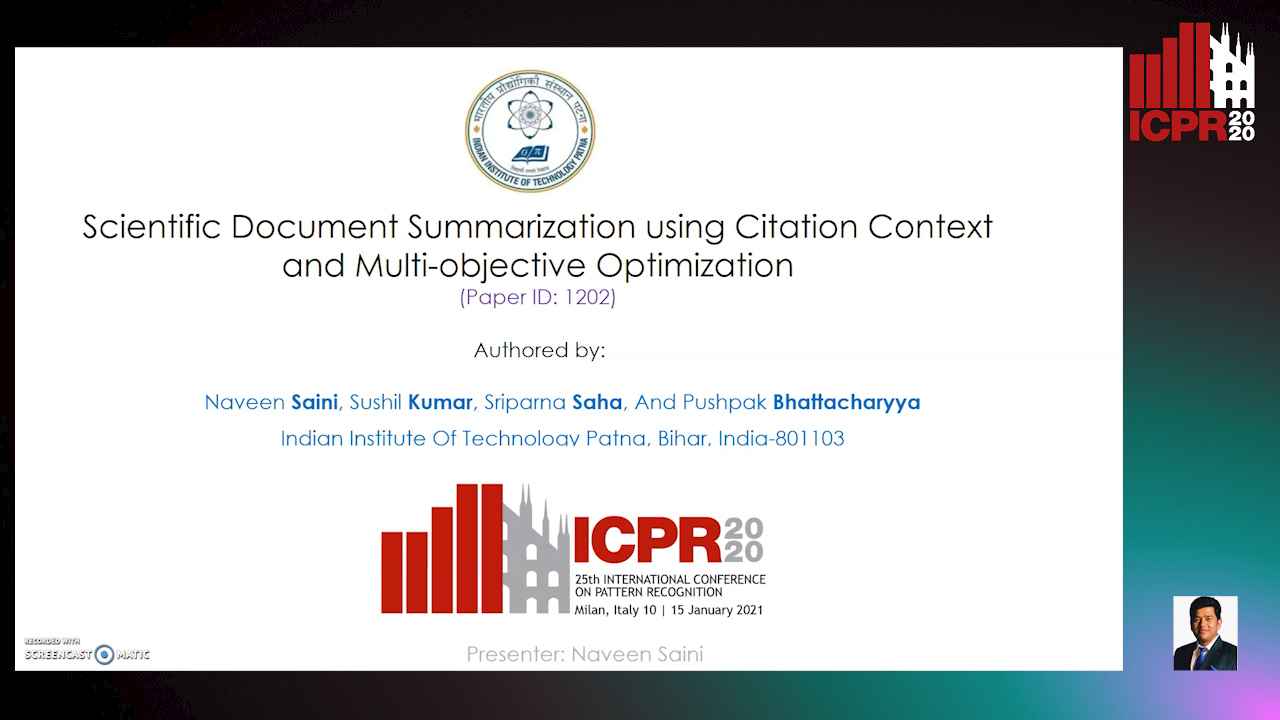
Auto-TLDR; SciSumm Summarization using Multi-Objective Optimization
Abstract Slides Poster Similar
Wasserstein k-Means with Sparse Simplex Projection
Takumi Fukunaga, Hiroyuki Kasai
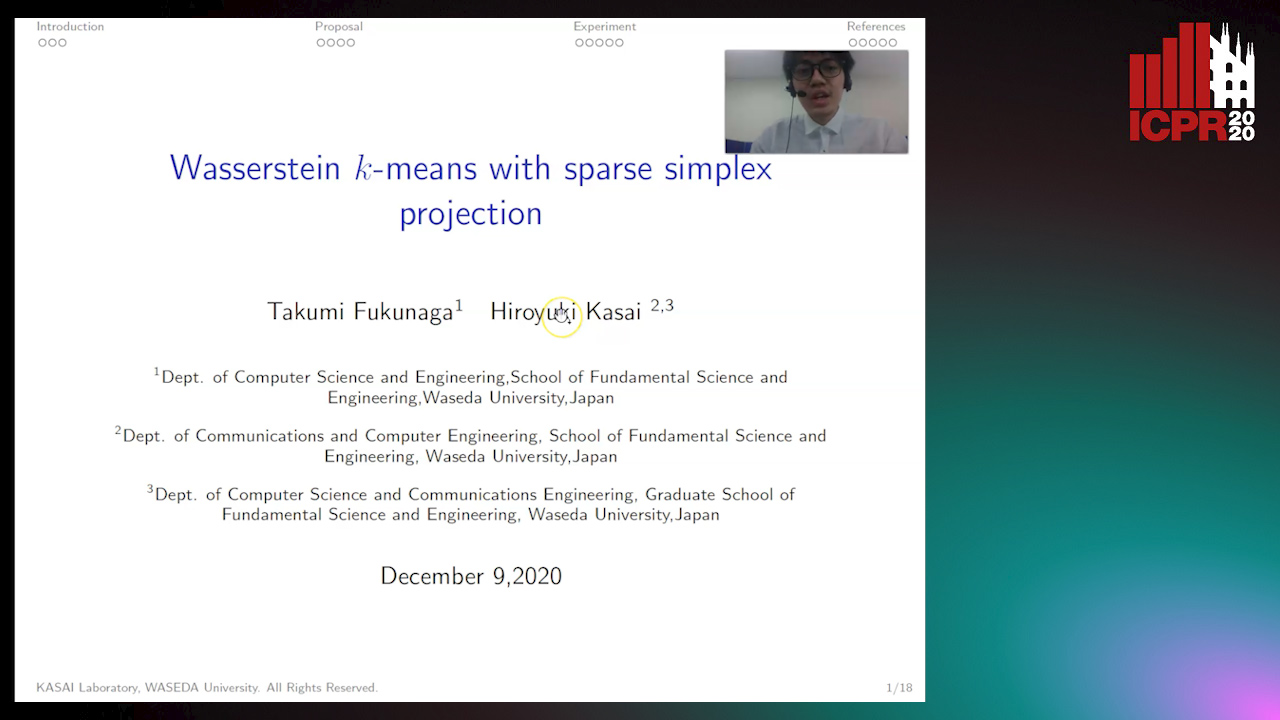
Auto-TLDR; SSPW $k$-means: Sparse Simplex Projection-based Wasserstein $ k$-Means Algorithm
Abstract Slides Poster Similar
Embedding Shared Low-Rank and Feature Correlation for Multi-View Data Analysis
Zhan Wang, Lizhi Wang, Hua Huang
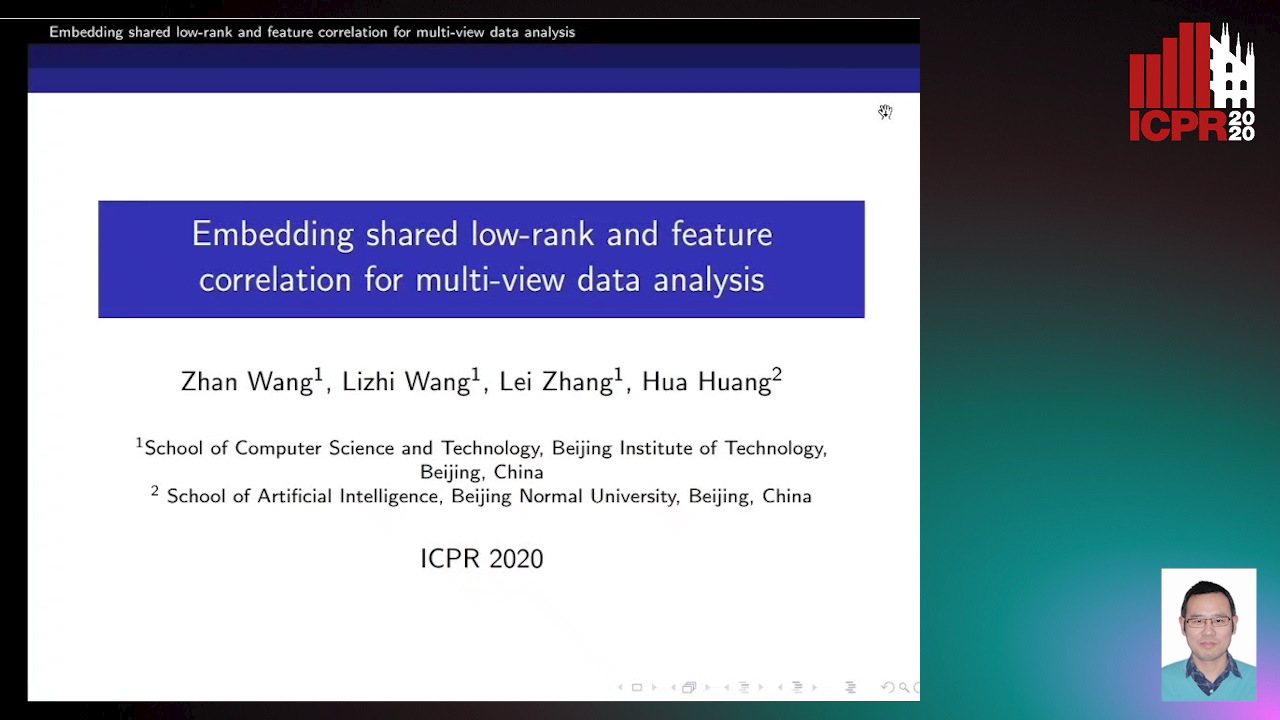
Auto-TLDR; embedding shared low-rank and feature correlation for multi-view data analysis
Abstract Slides Poster Similar
Deep Convolutional Embedding for Digitized Painting Clustering
Giovanna Castellano, Gennaro Vessio

Auto-TLDR; A Deep Convolutional Embedding Model for Clustering Artworks
Abstract Slides Poster Similar
Subspace Clustering Via Joint Unsupervised Feature Selection
Wenhua Dong, Xiaojun Wu, Hui Li, Zhenhua Feng, Josef Kittler

Auto-TLDR; Unsupervised Feature Selection for Subspace Clustering
Uniform and Non-Uniform Sampling Methods for Sub-Linear Time K-Means Clustering
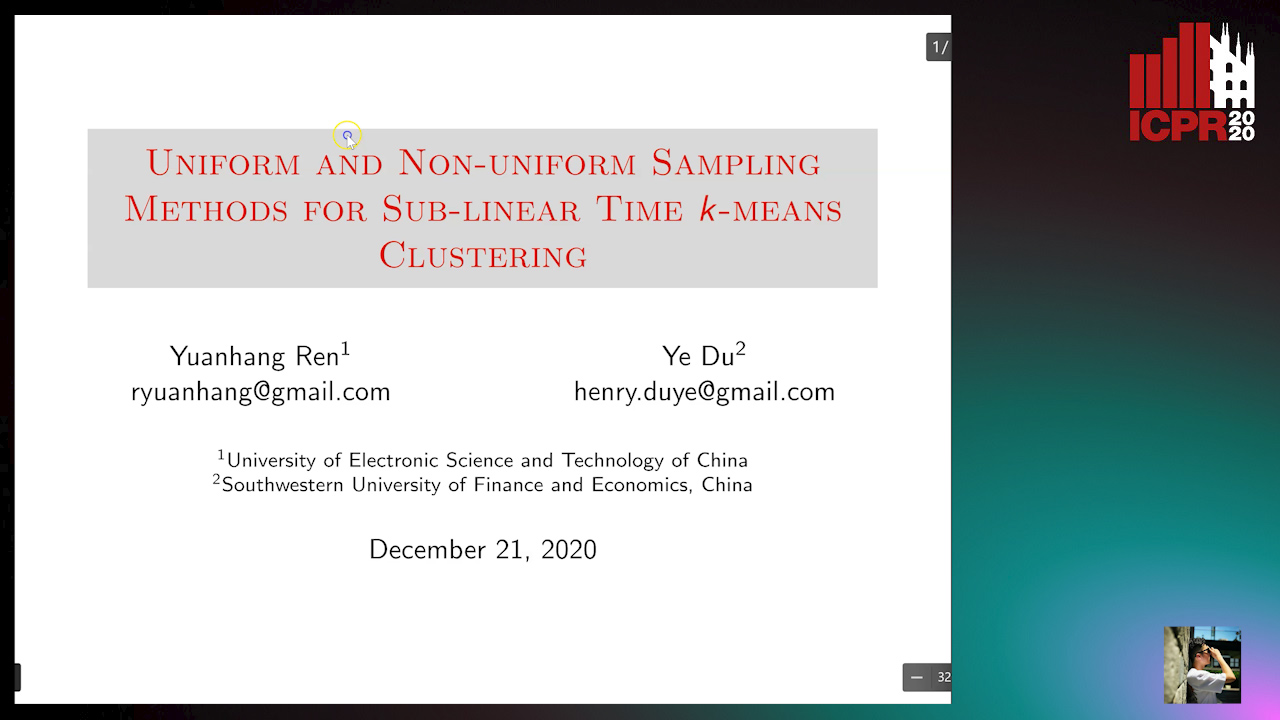
Auto-TLDR; Sub-linear Time Clustering with Constant Approximation Ratio for K-Means Problem
Abstract Slides Poster Similar
Sparse-Dense Subspace Clustering
Shuai Yang, Wenqi Zhu, Yuesheng Zhu
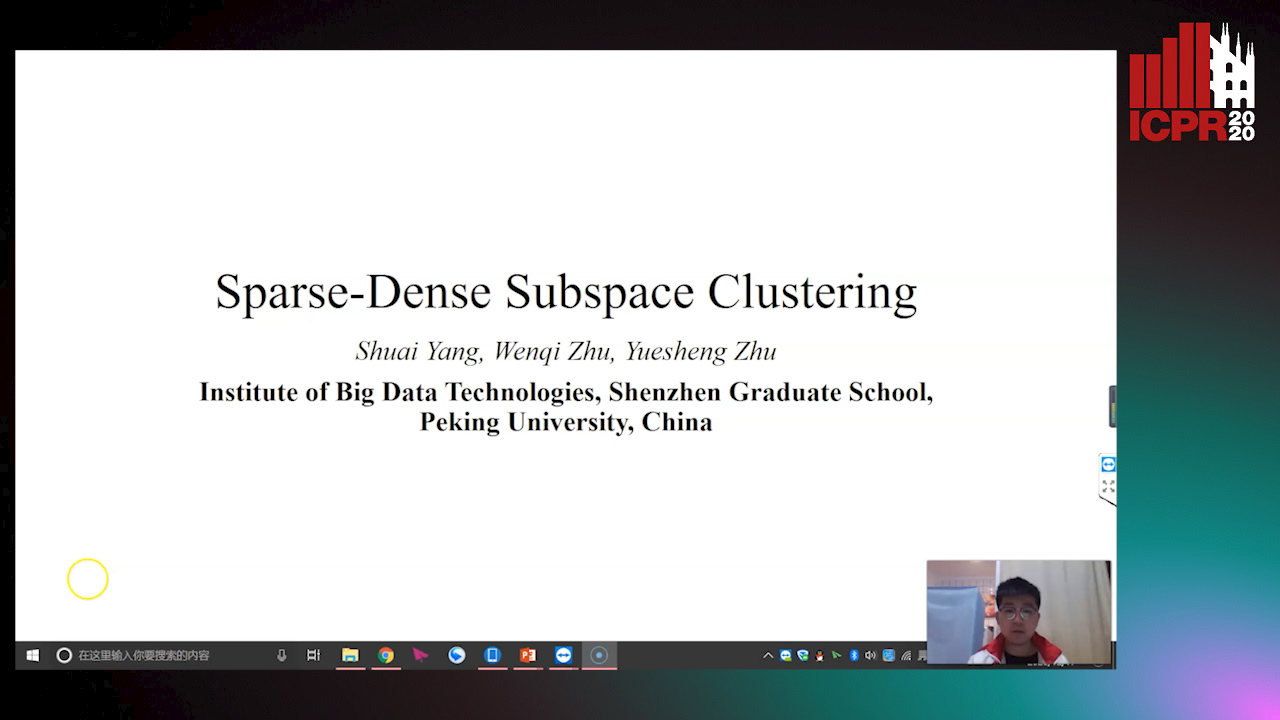
Auto-TLDR; Sparse-Dense Subspace Clustering with Piecewise Correlation Estimation
Abstract Slides Poster Similar
Assessing the Severity of Health States Based on Social Media Posts
Shweta Yadav, Joy Prakash Sain, Amit Sheth, Asif Ekbal, Sriparna Saha, Pushpak Bhattacharyya

Auto-TLDR; A Multiview Learning Framework for Assessment of Health State in Online Health Communities
Abstract Slides Poster Similar
Improved Time-Series Clustering with UMAP Dimension Reduction Method
Clément Pealat, Vincent Cheutet, Guillaume Bouleux

Auto-TLDR; Time Series Clustering with UMAP as a Pre-processing Step
Abstract Slides Poster Similar
Graph Spectral Feature Learning for Mixed Data of Categorical and Numerical Type
Saswata Sahoo, Souradip Chakraborty
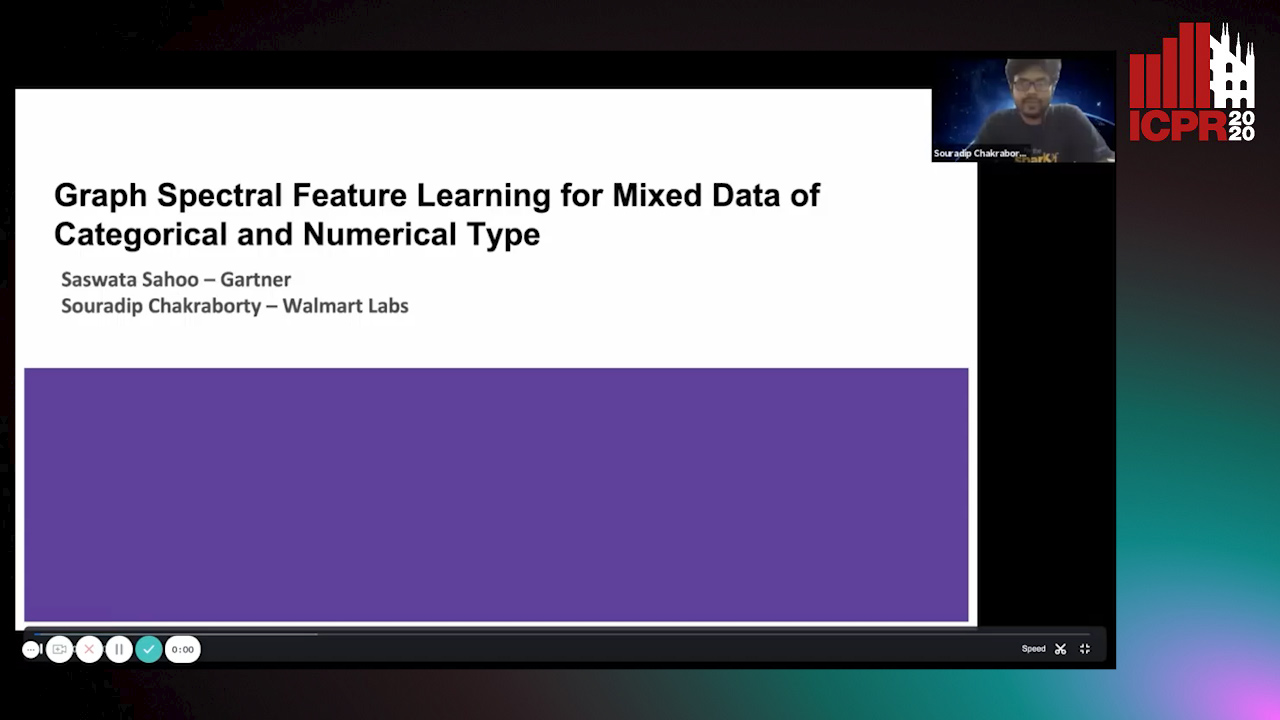
Auto-TLDR; Feature Learning in Mixed Type of Variable by an undirected graph
Abstract Slides Poster Similar
Fast Subspace Clustering Based on the Kronecker Product
Lei Zhou, Xiao Bai, Liang Zhang, Jun Zhou, Edwin Hancock

Auto-TLDR; Subspace Clustering with Kronecker Product for Large Scale Datasets
Abstract Slides Poster Similar
Scalable Direction-Search-Based Approach to Subspace Clustering

Auto-TLDR; Fast Direction-Search-Based Subspace Clustering
Region and Relations Based Multi Attention Network for Graph Classification
Manasvi Aggarwal, M. Narasimha Murty

Auto-TLDR; R2POOL: A Graph Pooling Layer for Non-euclidean Structures
Abstract Slides Poster Similar
Unveiling Groups of Related Tasks in Multi-Task Learning
Jordan Frecon, Saverio Salzo, Massimiliano Pontil
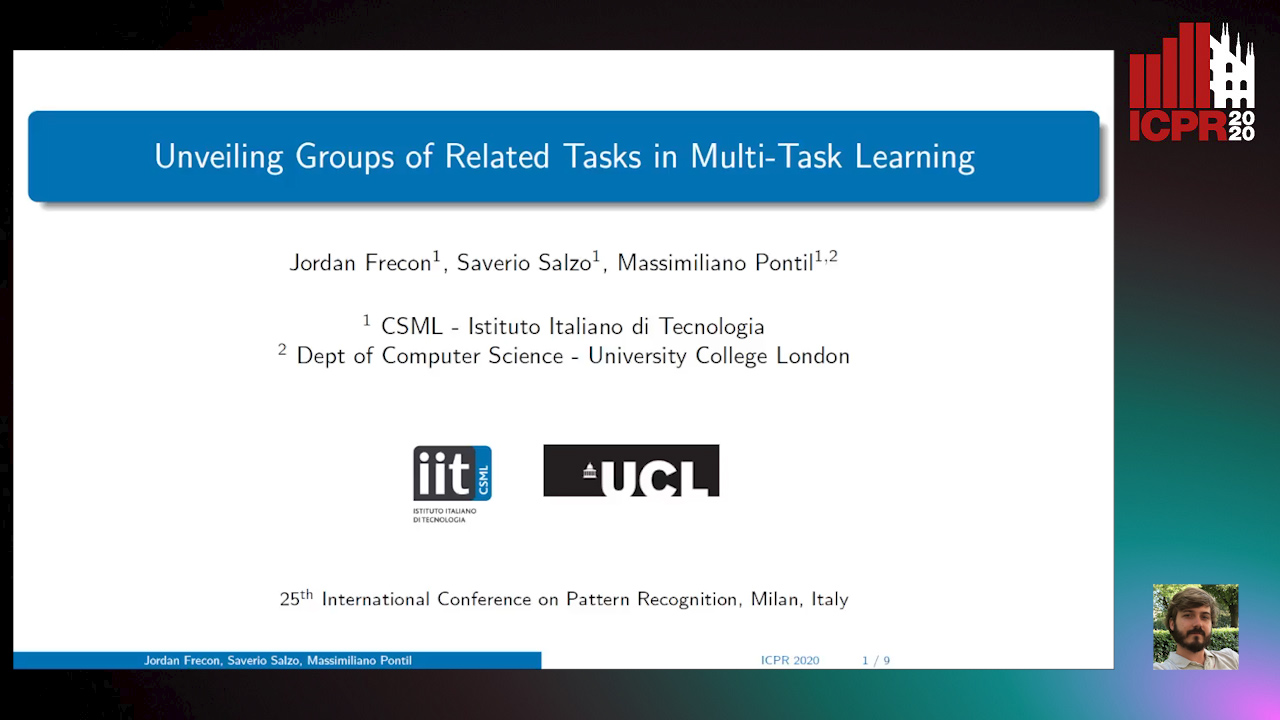
Auto-TLDR; Continuous Bilevel Optimization for Multi-Task Learning
Abstract Slides Poster Similar
Deep Topic Modeling by Multilayer Bootstrap Network and Lasso
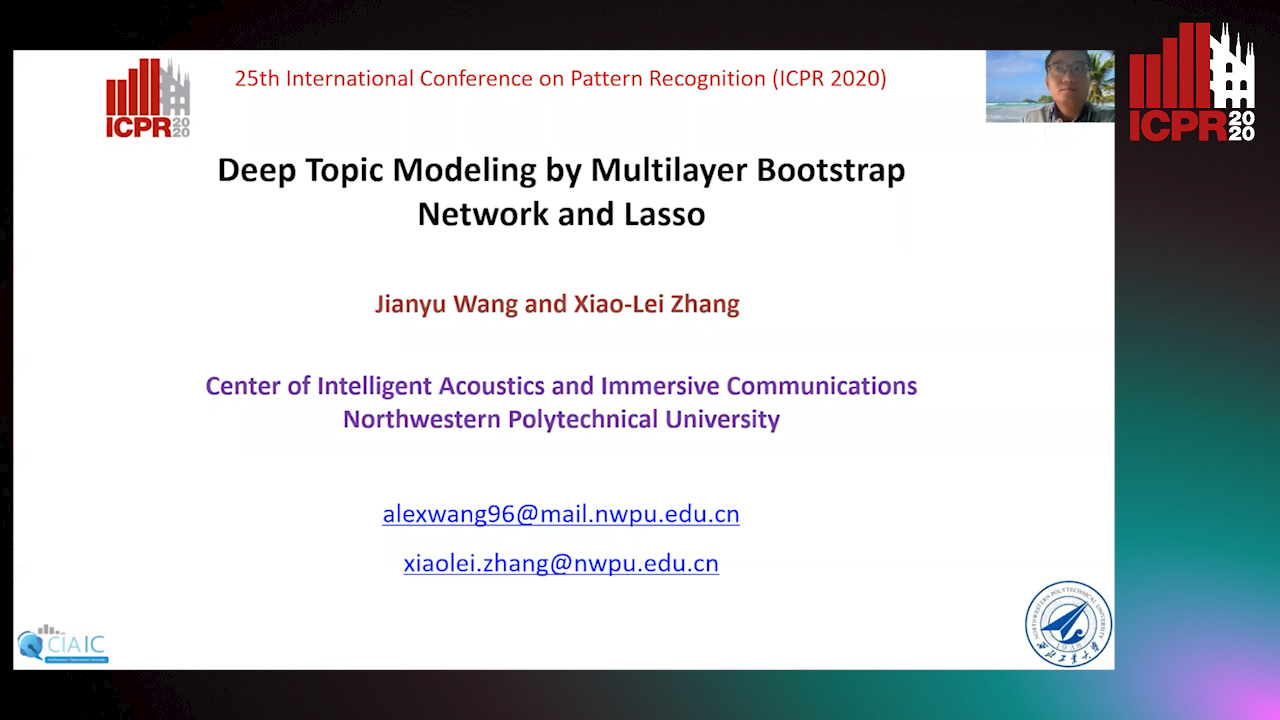
Auto-TLDR; Unsupervised Deep Topic Modeling with Multilayer Bootstrap Network and Lasso
Abstract Slides Poster Similar
Classification and Feature Selection Using a Primal-Dual Method and Projections on Structured Constraints
Michel Barlaud, Antonin Chambolle, Jean_Baptiste Caillau

Auto-TLDR; A Constrained Primal-dual Method for Structured Feature Selection on High Dimensional Data
Abstract Slides Poster Similar
Position-Aware Safe Boundary Interpolation Oversampling

Auto-TLDR; PABIO: Position-Aware Safe Boundary Interpolation-Based Oversampling for Imbalanced Data
Abstract Slides Poster Similar
ClusterFace: Joint Clustering and Classification for Set-Based Face Recognition
Samadhi Poornima Kumarasinghe Wickrama Arachchilage, Ebroul Izquierdo

Auto-TLDR; Joint Clustering and Classification for Face Recognition in the Wild
Abstract Slides Poster Similar
Temporal Pattern Detection in Time-Varying Graphical Models
Federico Tomasi, Veronica Tozzo, Annalisa Barla
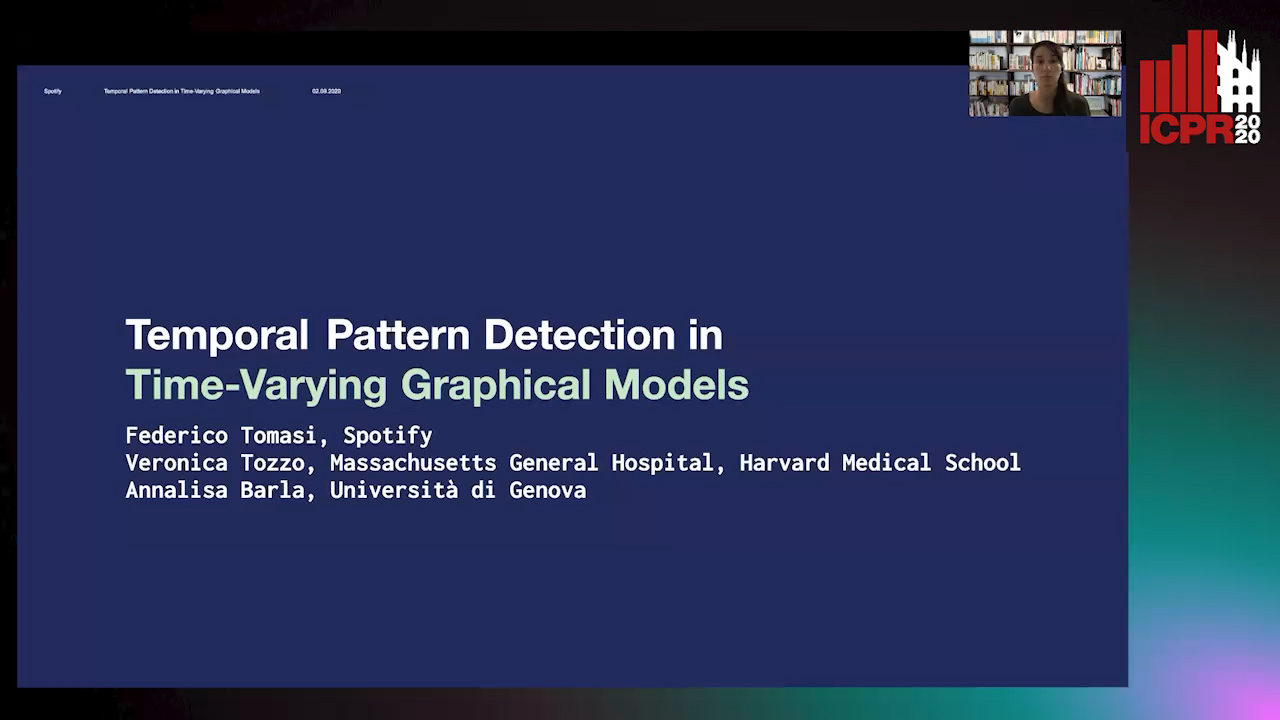
Auto-TLDR; A dynamical network inference model that leverages on kernels to consider general temporal patterns
Abstract Slides Poster Similar
Conditional Multi-Task Learning for Plant Disease Identification
Sue Han Lee, Herve Goëau, Pierre Bonnet, Alexis Joly
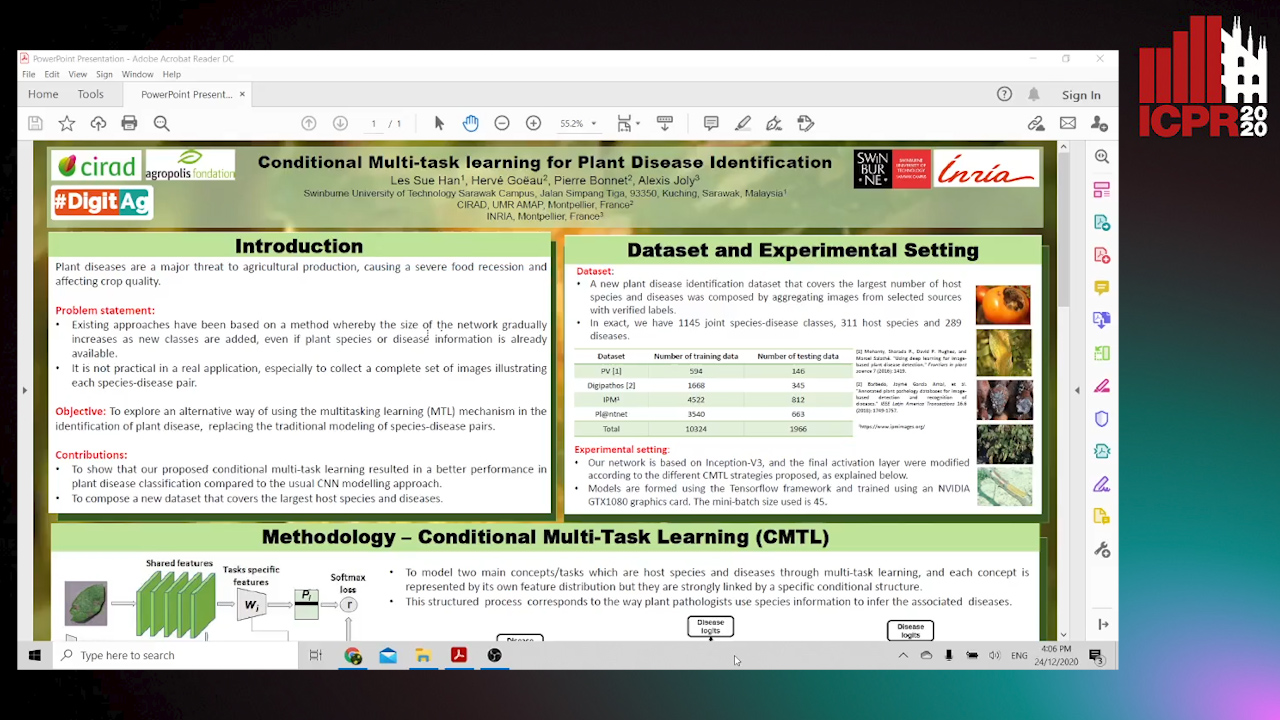
Auto-TLDR; A conditional multi-task learning approach for plant disease identification
Abstract Slides Poster Similar
Constrained Spectral Clustering Network with Self-Training
Xinyue Liu, Shichong Yang, Linlin Zong

Auto-TLDR; Constrained Spectral Clustering Network: A Constrained Deep spectral clustering network
Abstract Slides Poster Similar
Aggregating Dependent Gaussian Experts in Local Approximation
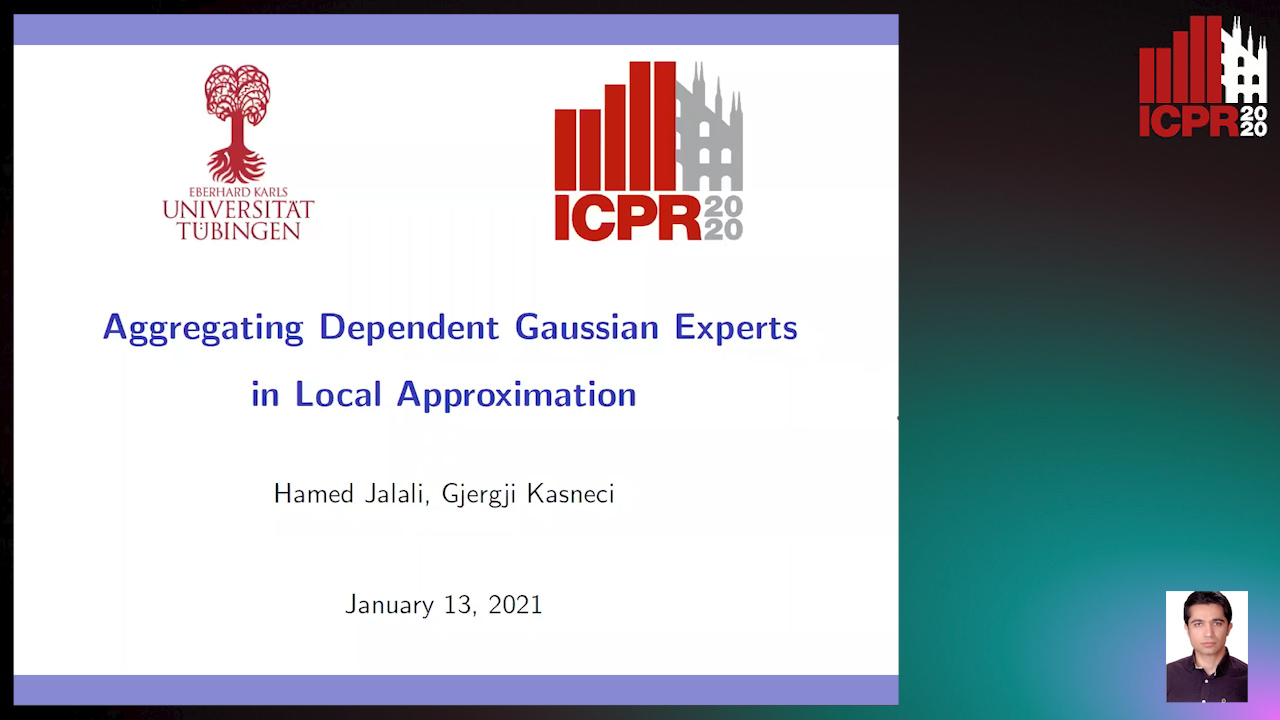
Auto-TLDR; A novel approach for aggregating the Gaussian experts by detecting strong violations of conditional independence
Abstract Slides Poster Similar
Social Network Analysis Using Knowledge-Graph Embeddings and Convolution Operations
Bonaventure Chidube Molokwu, Shaon Bhatta Shuvo, Ziad Kobti, Narayan C. Kar

Auto-TLDR; RLVECO: Representation Learning via Knowledge- Graph Embeddings and Convolution Operations for Social Network Analysis
Abstract Slides Poster Similar
Adversarial Encoder-Multi-Task-Decoder for Multi-Stage Processes
Andre Mendes, Julian Togelius, Leandro Dos Santos Coelho

Auto-TLDR; Multi-Task Learning and Semi-Supervised Learning for Multi-Stage Processes
Algorithm Recommendation for Data Streams
Jáder Martins Camboim De Sá, Andre Luis Debiaso Rossi, Gustavo Enrique De Almeida Prado Alves Batista, Luís Paulo Faina Garcia
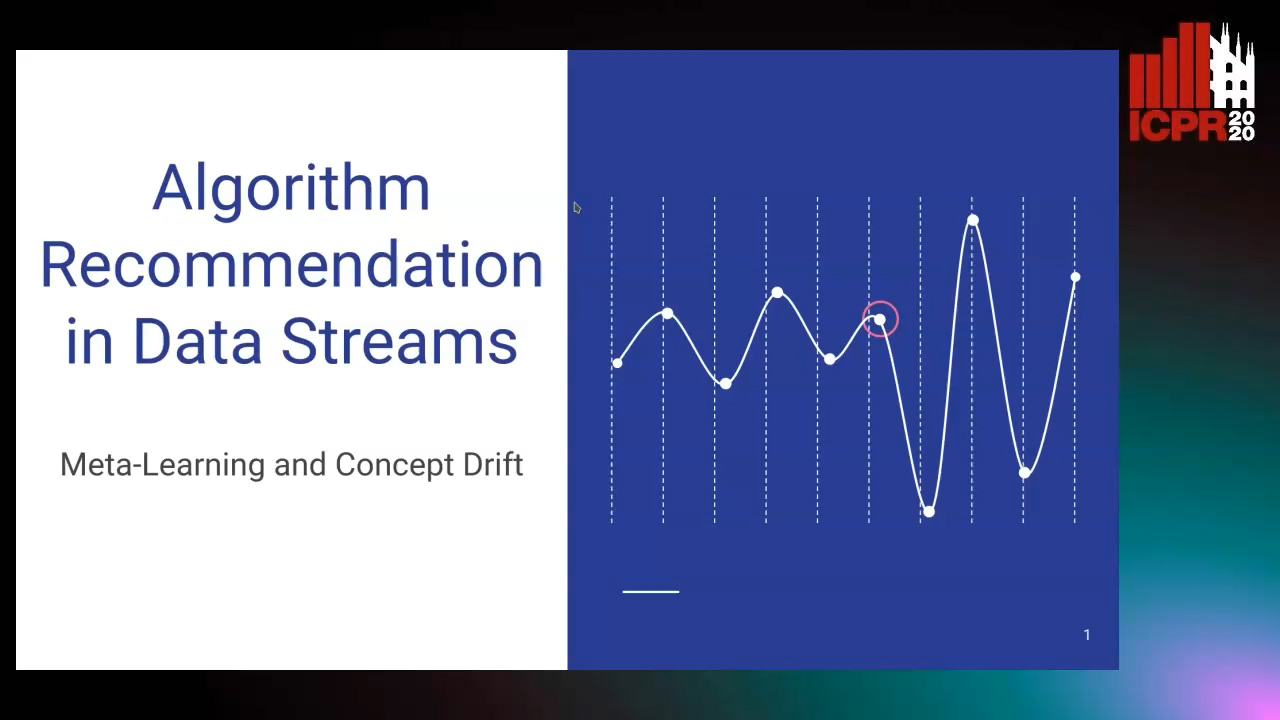
Auto-TLDR; Meta-Learning for Algorithm Selection in Time-Changing Data Streams
Abstract Slides Poster Similar
An Effective Approach for Neural Network Training Based on Comprehensive Learning
Seyed Jalaleddin Mousavirad, Gerald Schaefer, Iakov Korovin

Auto-TLDR; ClPSO-LM: A Hybrid Algorithm for Multi-layer Feed-Forward Neural Networks
A Novel Random Forest Dissimilarity Measure for Multi-View Learning
Hongliu Cao, Simon Bernard, Robert Sabourin, Laurent Heutte

Auto-TLDR; Multi-view Learning with Random Forest Relation Measure and Instance Hardness
Abstract Slides Poster Similar
N2D: (Not Too) Deep Clustering Via Clustering the Local Manifold of an Autoencoded Embedding
Ryan Mcconville, Raul Santos-Rodriguez, Robert Piechocki, Ian Craddock

Auto-TLDR; Local Manifold Learning for Deep Clustering on Autoencoded Embeddings
Subspace Clustering for Action Recognition with Covariance Representations and Temporal Pruning
Giancarlo Paoletti, Jacopo Cavazza, Cigdem Beyan, Alessio Del Bue

Auto-TLDR; Unsupervised Learning for Human Action Recognition from Skeletal Data
Learning Natural Thresholds for Image Ranking
Somayeh Keshavarz, Quang Nhat Tran, Richard Souvenir

Auto-TLDR; Image Representation Learning and Label Discretization for Natural Image Ranking
Abstract Slides Poster Similar
Tensor Factorization of Brain Structural Graph for Unsupervised Classification in Multiple Sclerosis
Berardino Barile, Marzullo Aldo, Claudio Stamile, Françoise Durand-Dubief, Dominique Sappey-Marinier

Auto-TLDR; A Fully Automated Tensor-based Algorithm for Multiple Sclerosis Classification based on Structural Connectivity Graph of the White Matter Network
Abstract Slides Poster Similar
SSDL: Self-Supervised Domain Learning for Improved Face Recognition
Samadhi Poornima Kumarasinghe Wickrama Arachchilage, Ebroul Izquierdo

Auto-TLDR; Self-supervised Domain Learning for Face Recognition in unconstrained environments
Abstract Slides Poster Similar
On Learning Random Forests for Random Forest Clustering
Manuele Bicego, Francisco Escolano
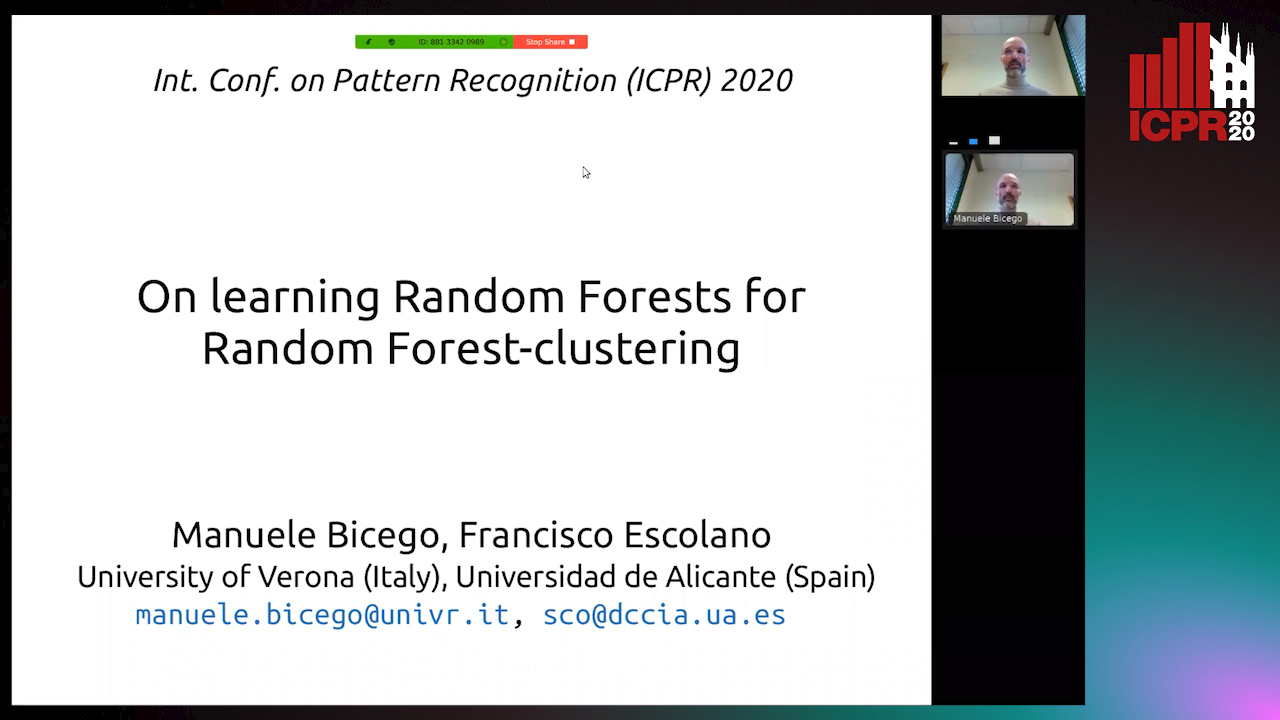
Auto-TLDR; Learning Random Forests for Clustering
Abstract Slides Poster Similar
Temporal Collaborative Filtering with Graph Convolutional Neural Networks
Esther Rodrigo-Bonet, Minh Duc Nguyen, Nikos Deligiannis
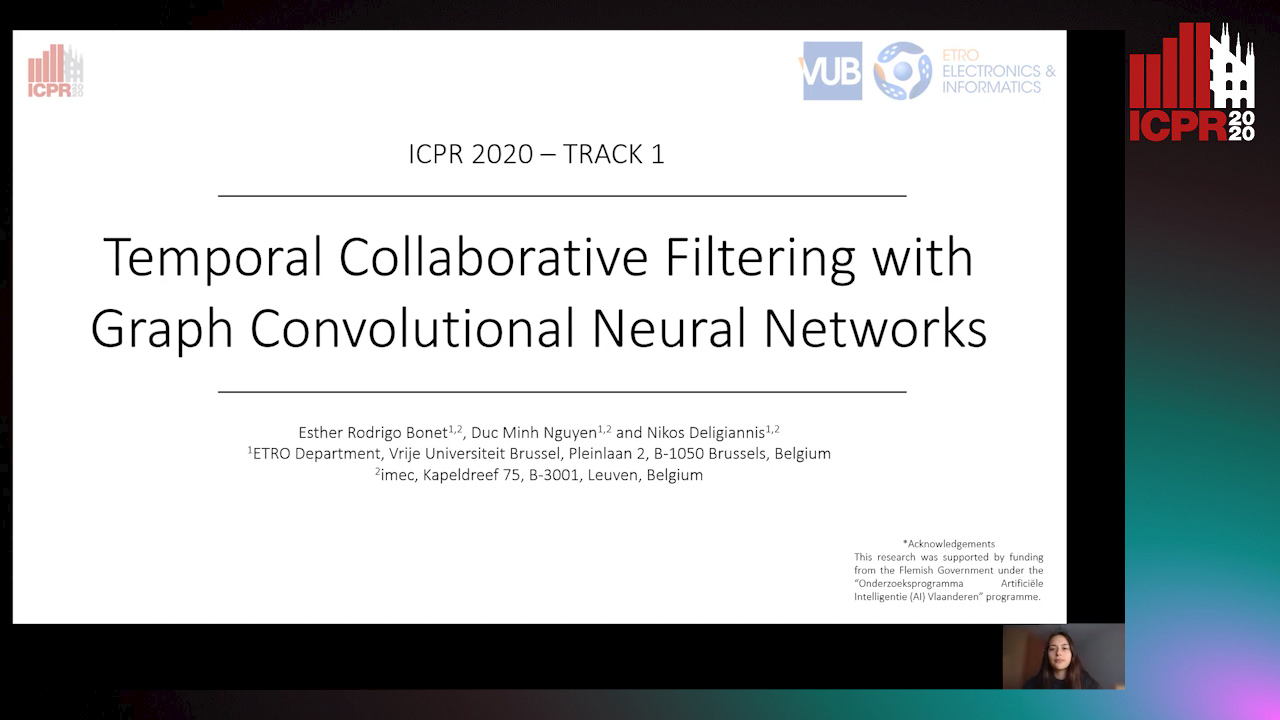
Auto-TLDR; Temporal Collaborative Filtering with Graph-Neural-Network-based Neural Networks
Abstract Slides Poster Similar
A Spectral Clustering on Grassmann Manifold Via Double Low Rank Constraint
Xinglin Piao, Yongli Hu, Junbin Gao, Yanfeng Sun, Xin Yang, Baocai Yin

Auto-TLDR; Double Low Rank Representation for High-Dimensional Data Clustering on Grassmann Manifold
Adaptive Matching of Kernel Means
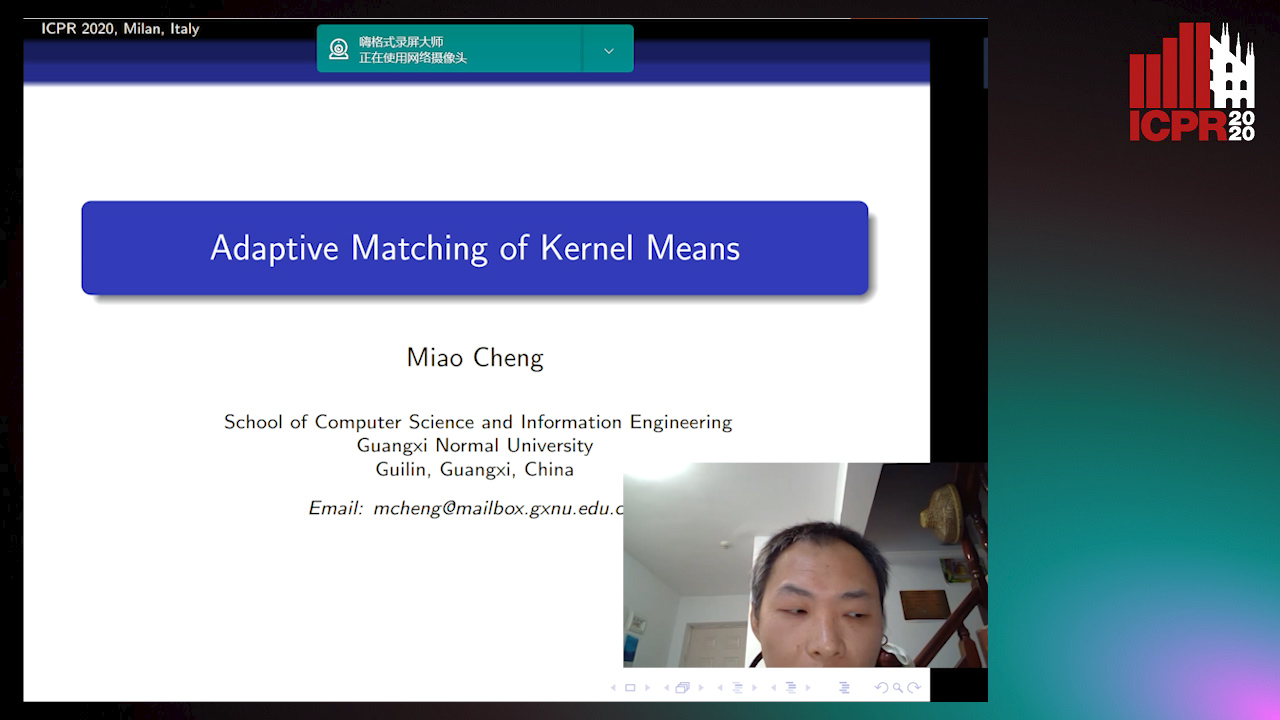
Auto-TLDR; Adaptive Matching of Kernel Means for Knowledge Discovery and Feature Learning
Abstract Slides Poster Similar
MD-kNN: An Instance-Based Approach for Multi-Dimensional Classification
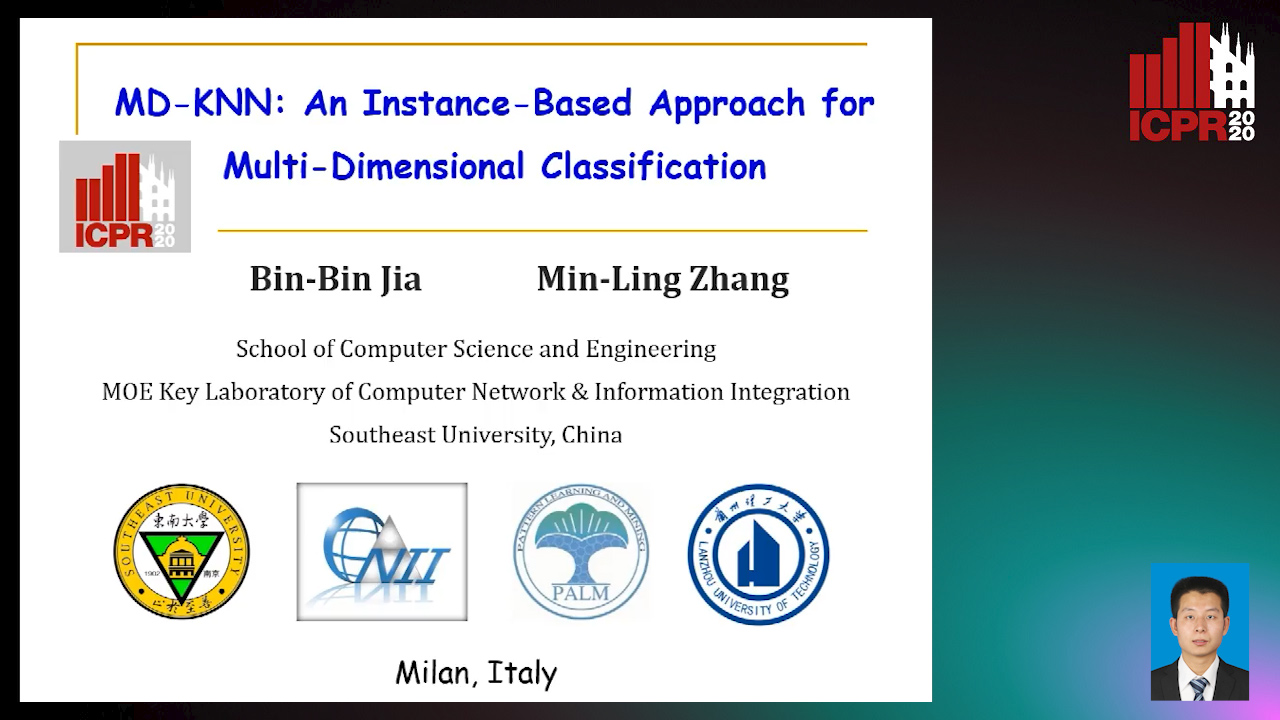
Auto-TLDR; MD-kNN: Adapting Instance-based Techniques for Multi-dimensional Classification
Abstract Slides Poster Similar
Edge-Aware Graph Attention Network for Ratio of Edge-User Estimation in Mobile Networks
Jiehui Deng, Sheng Wan, Xiang Wang, Enmei Tu, Xiaolin Huang, Jie Yang, Chen Gong
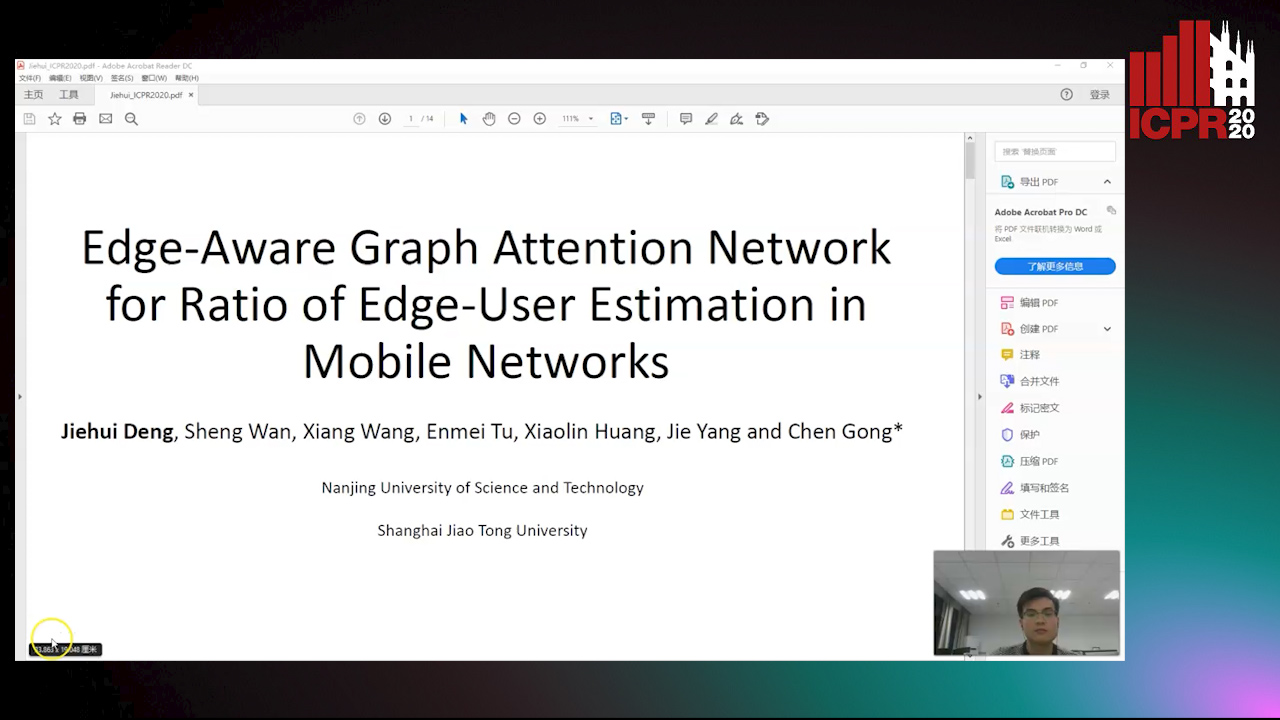
Auto-TLDR; EAGAT: Edge-Aware Graph Attention Network for Automatic REU Estimation in Mobile Networks
Abstract Slides Poster Similar
A Framework for Local Outlier Detection from Spatio-Temporal Trajectory Datasets
Xumin Cai, Berkay Aydin, Anli Ji, Rafal Angryk

Auto-TLDR; Local Outlier Detection Using Spatial and Temporal Features of Trajectory Segment Using Time-Based partition strategy
Categorizing the Feature Space for Two-Class Imbalance Learning
Rosa Sicilia, Ermanno Cordelli, Paolo Soda

Auto-TLDR; Efficient Ensemble of Classifiers for Minority Class Inference
Abstract Slides Poster Similar
Budgeted Batch Mode Active Learning with Generalized Cost and Utility Functions
Arvind Agarwal, Shashank Mujumdar, Nitin Gupta, Sameep Mehta
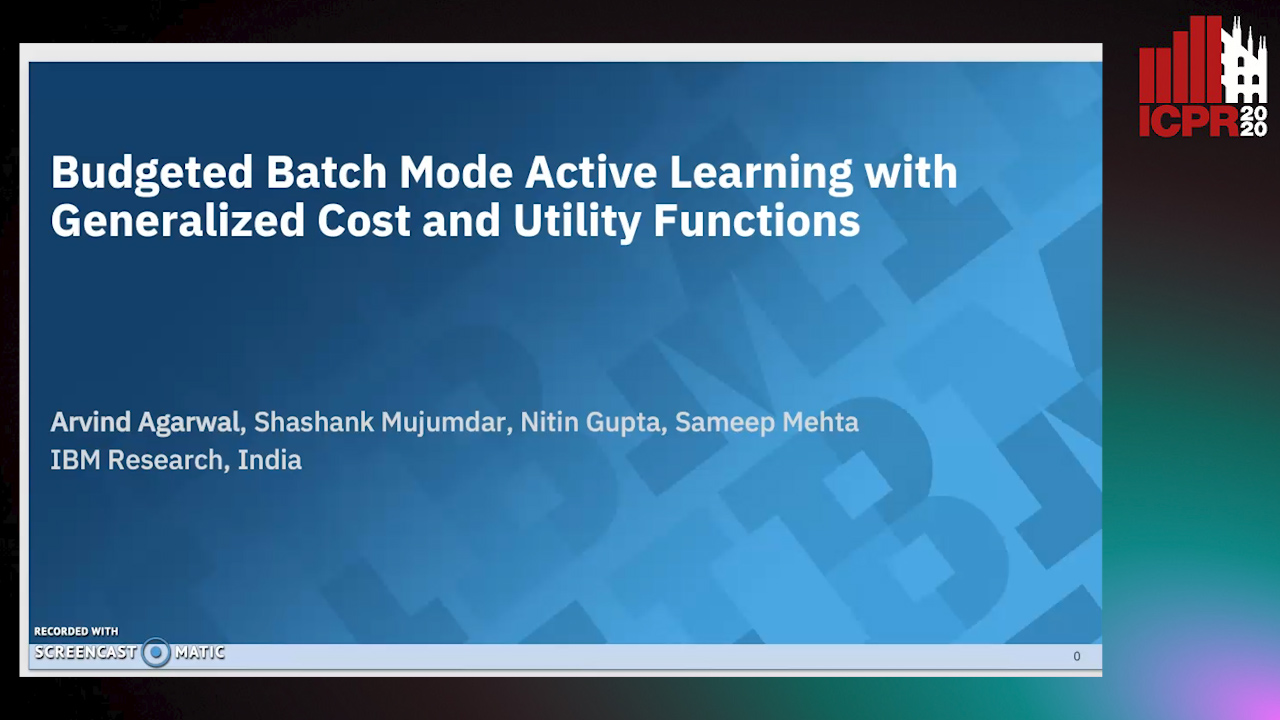
Auto-TLDR; Active Learning Based on Utility and Cost Functions
Abstract Slides Poster Similar
Motion Segmentation with Pairwise Matches and Unknown Number of Motions
Federica Arrigoni, Tomas Pajdla, Luca Magri
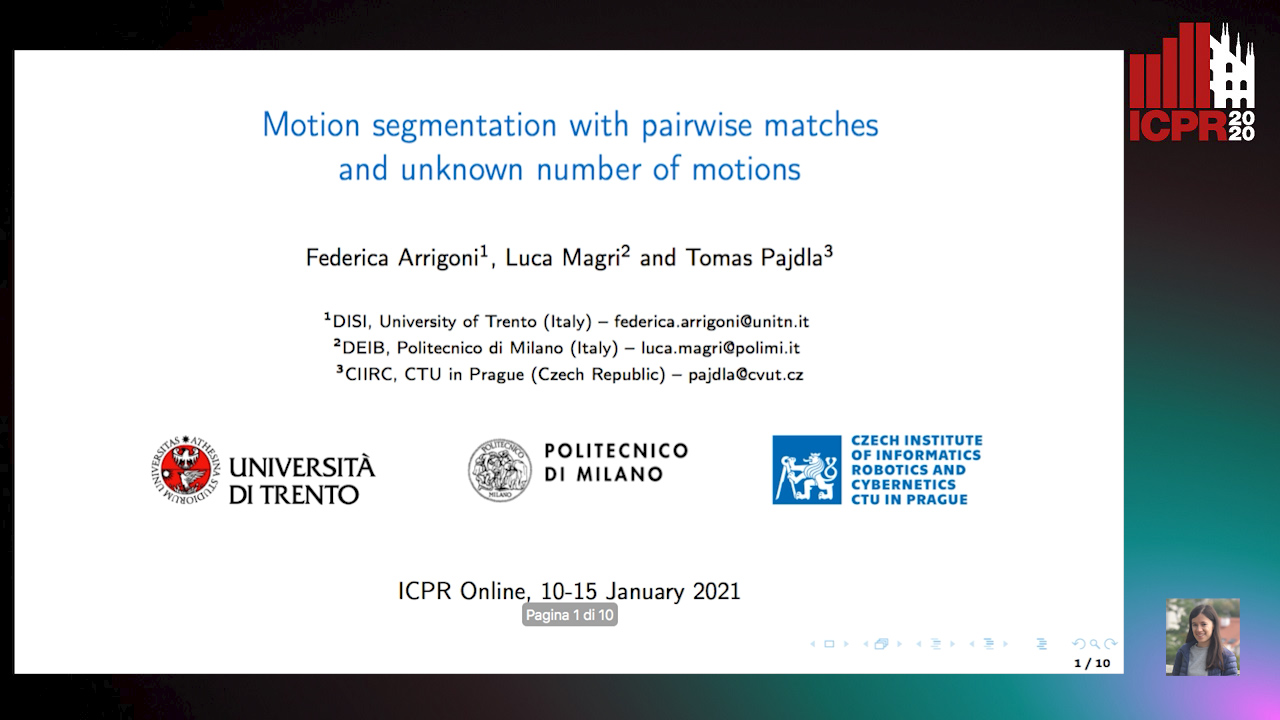
Auto-TLDR; Motion Segmentation using Multi-Modelfitting andpermutation synchronization
Abstract Slides Poster Similar